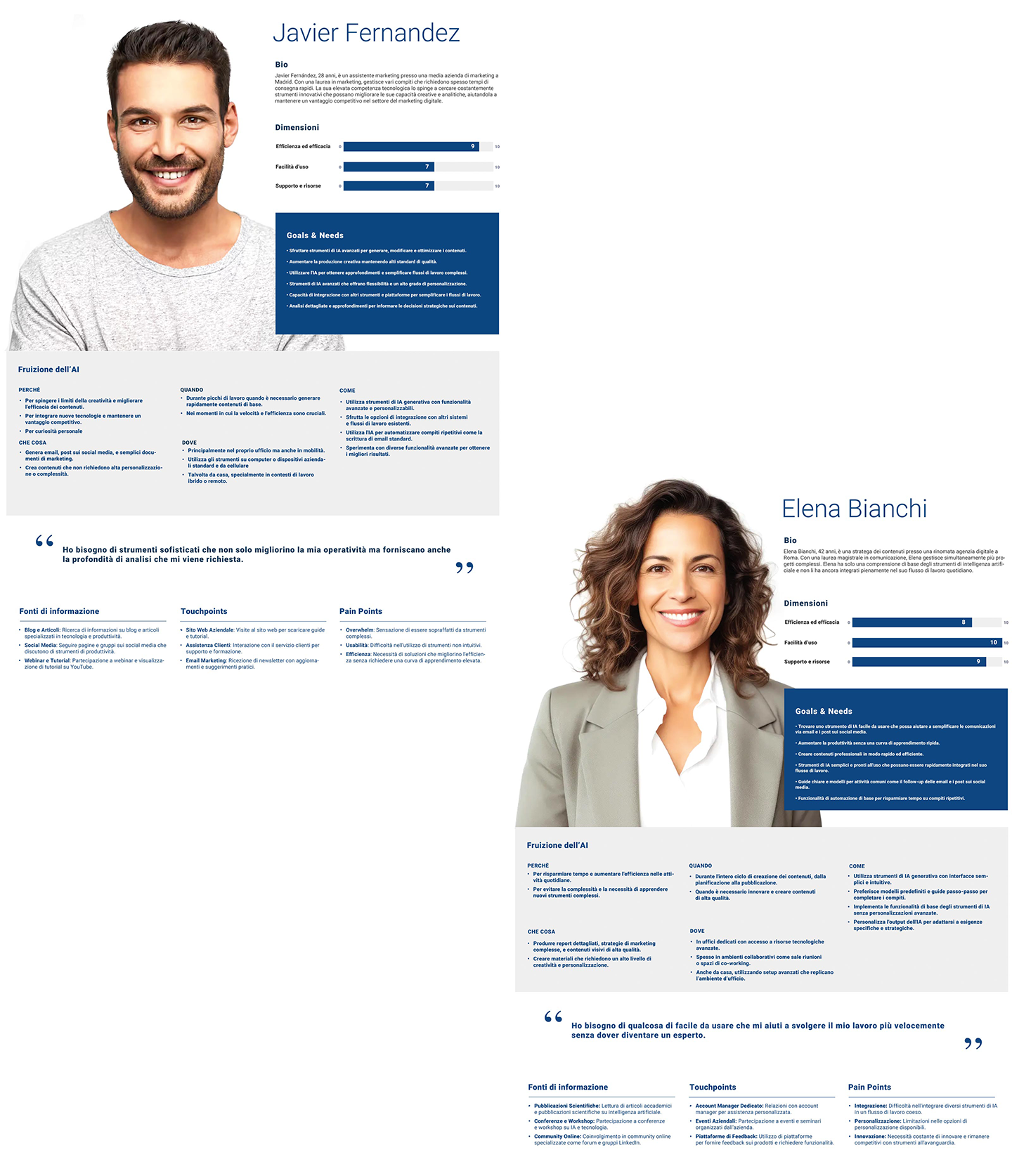Contents.com SaaS Platform
Overview
Contents.com is the Generative AI platform to create impactful content built for performance. Generate any type of content in just a few seconds! AI Writer is powered by GPT-4 and represents a repository of templates that can support you in managing your daily content creation needs.
Problem
Despite users’ appreciation for the quality of the generated output, the platform suffered from evident usability issues and an outdated visual appearance that did not align with market standards set by competitors such as Jasper.ai, OpenAI’s ChatGPT, and Writesonic.com, which it sought to emulate.
Solution
Our goal in the platform redesign process was to improve the interface and usability of our existing platform to align with market standards. We analyzed industry trends and competitor approaches to ensure our platform met current usability benchmarks. Through thorough user research, including interviews, data analysis, and surveys, we gained insights into user intentions, needs, and expectations. This informed our decision-making for interface design and usability optimization. By conducting heuristic evaluations and drawing inspiration from innovative solutions, we aimed to create a superior user experience that aligns with market standards and enhances user productivity and satisfaction.
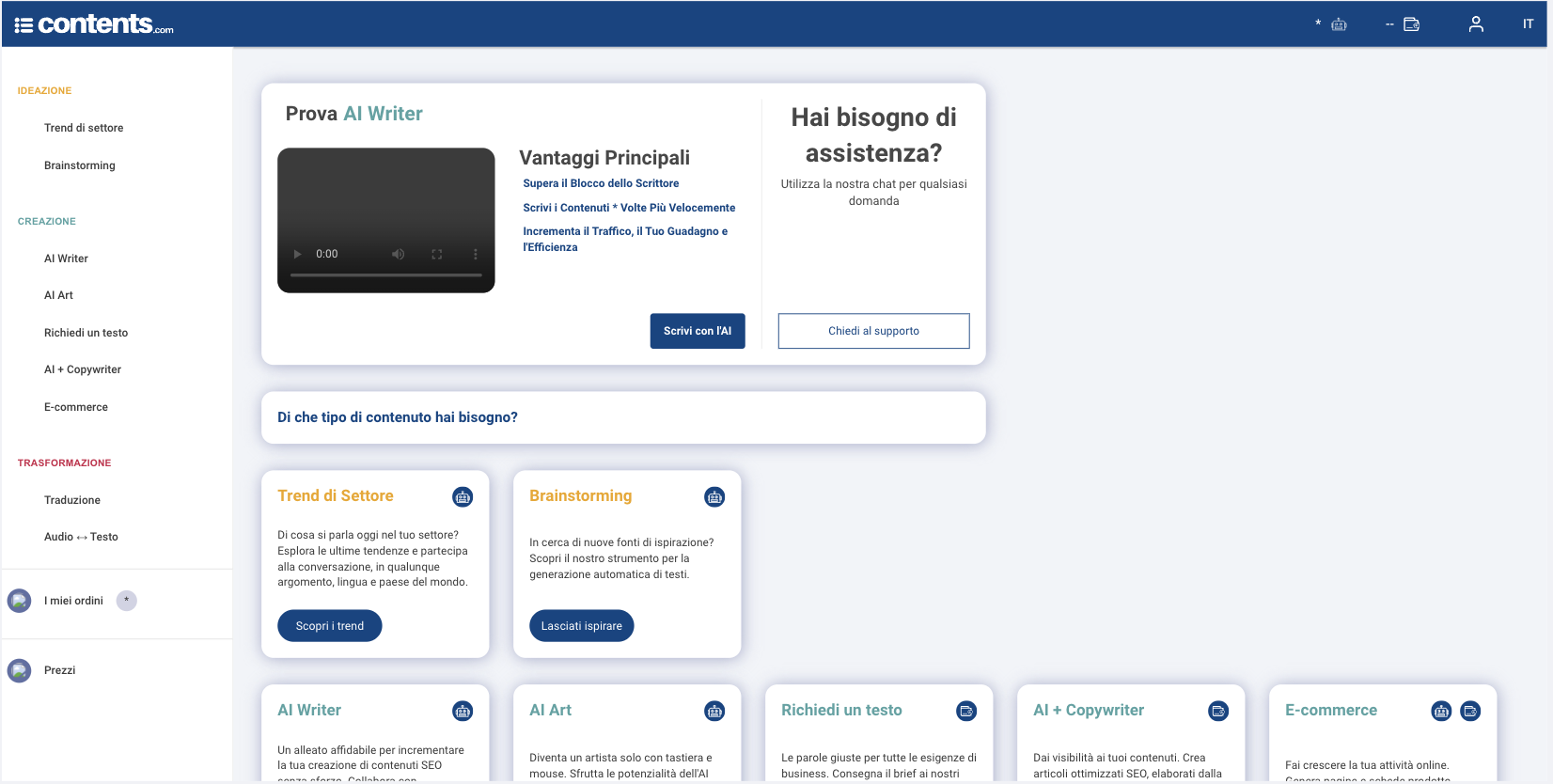

Role
I assumed the following roles designing this platform:
- User Experience (UX) Designer
- Interaction (IxD) Designer
- UX Researcher
- User Interface (UI) Designer
- Visual Designer
Deliverables
- Stakeholder Interviews
- Competitive analysis
- Heuristic Analysis
- User surveys and one-on-one interviews
- Design Thinking Workshop
- Information Architecture (IA) Design
- User journeys and task flows
- Low-fidelity wireframes
- High-fidelity mockups and prototypes
- Usability tests and findings
- Iterative Improvements
- High-fidelity interactive prototypes for key tasks
- Presentation to stakeholders
Project Specification
Duration: 8 weeks
Tools:
- Figma
- Hotjar
- Miro
- Photoshop
- Illustrator
Process
Discovery
Through data analysis, on-site users’ behavior tracking, competitive analysis, a true intent survey that reached more than 3,200 users and six individual user interviews we developed a deep understanding of our users.
The initial assumptions regarding usability issues have been confirmed based on the research results. Users feel the need for more clarity within the platform, as they struggle to understand how to use the tools and where to find the outputs.
Some evidence:
- Users are positively impressed by the quality of the output. They didn’t expect ready-to-use texts, they imagined they would have to work on the text before being able to use it.
- Tools that involve multiple steps are not immediately understood by users, who experience temporary frustration before grasping their functioning.
- Some labels and interaction elements are unclear and can lead to misunderstandings.
- Users are expressing the need for an increased presence of informative points and detailed descriptions to enhance their understanding of how to effectively utilize the tools.
- Users are frustrated with the image generation tool. Their approach to creating the prompt is similar to performing a search on a search engine, but this involves using essential keywords, at the expense of the level of detail required to create a prompt for text-to-image.
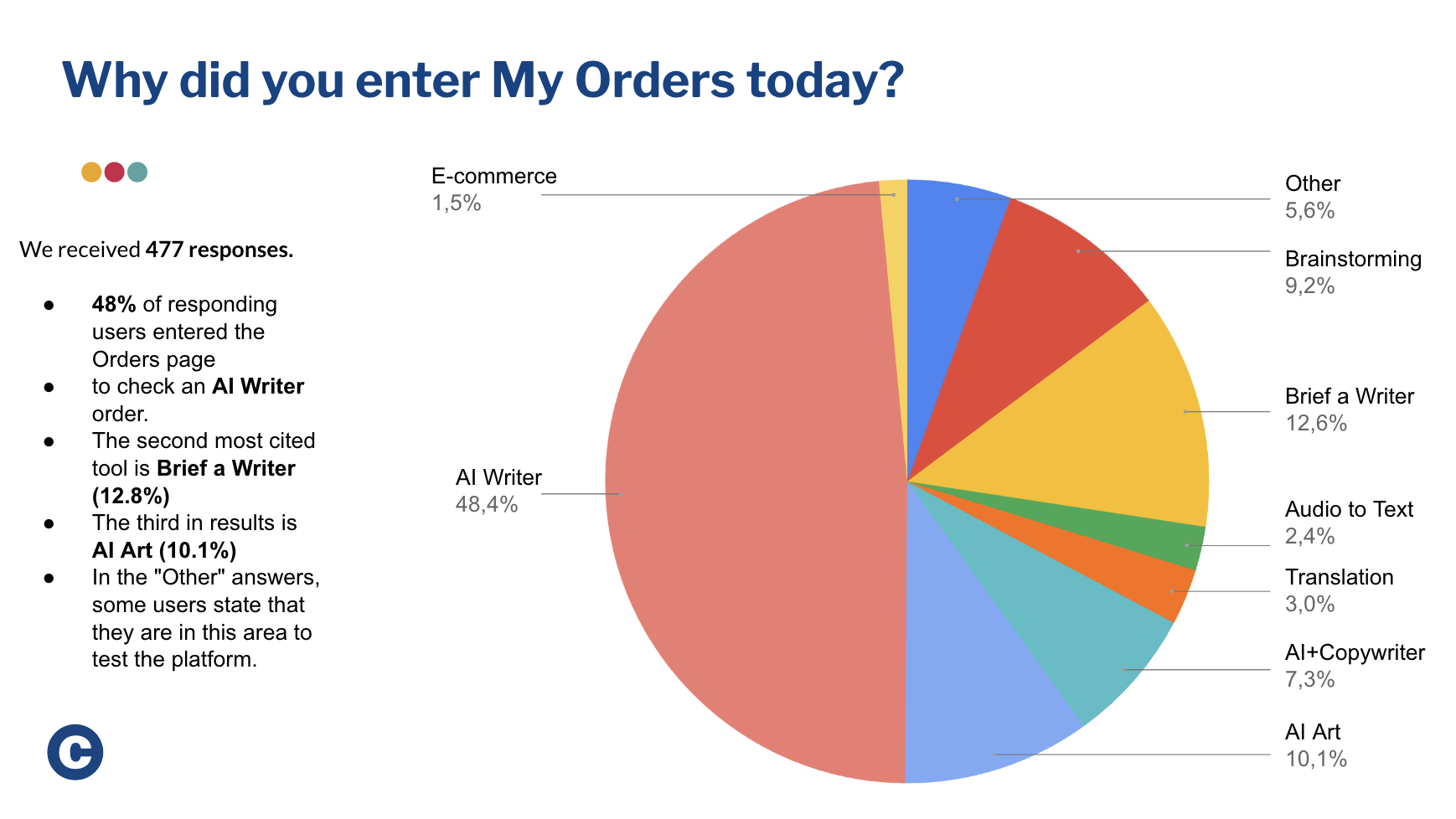
"It seems much more comprehensive than I had imagined. I'm particularly impressed by the parts about images and translations. I had no idea there were built-in translation tools. It's fascinating."
"I need to go to the 'my orders' section, but I don't know where the 'my orders' section is now. Okay, here it is. I see it's pending, so evidently someone needs to take action. I'm not sure if it's me, I don't think so."

Emphatize
During our research activities, we were able to identify five main categories of platform users, each with distinct needs and frustrations: Students, Social Media Managers, Copywriters, Designers, and Marketing Managers. To leverage this valuable information and foster a deep understanding of our users, we organized design thinking workshops involving team members from various business functions, including marketing, content, and product.
The objective of these sessions was to create detailed empathy maps for each user group. Through the collaboration of different professionals, our aim was to facilitate both individual and collective empathy towards users during future development and design activities.
Recognizing the diverse perspectives offered by each department, we seized this opportunity to increase the team’s awareness of how the different user categories may perceive and interact with our products or services. This approach allowed us to identify more relevant and effective solutions, placing the real needs of users at the center of attention.


Ideation
In this phase, our main goal was to generate a wide range of solutions and design concepts that were rooted in the valuable insights gained during the previous discovery phase. By leveraging these insights, we were able to make informed decisions and create designs that would resonate with our users.
To refine and visualize our ideas, we engaged in activities such as moodboarding in order to gain a deeper understanding of the visual direction we wanted to pursue, allowing us to shape our design solutions with the coherent and evocative vision we had in mind.
As part of this process, we also analyzed emerging UI trends to understand how to anticipate visual evolutions and create future-proof designs. In particular, we identified growing interest in styles such as skeuomorphism, claymorphism, and glassmorphism, which helped us explore new stylistic directions aligned with current and upcoming design sensibilities.

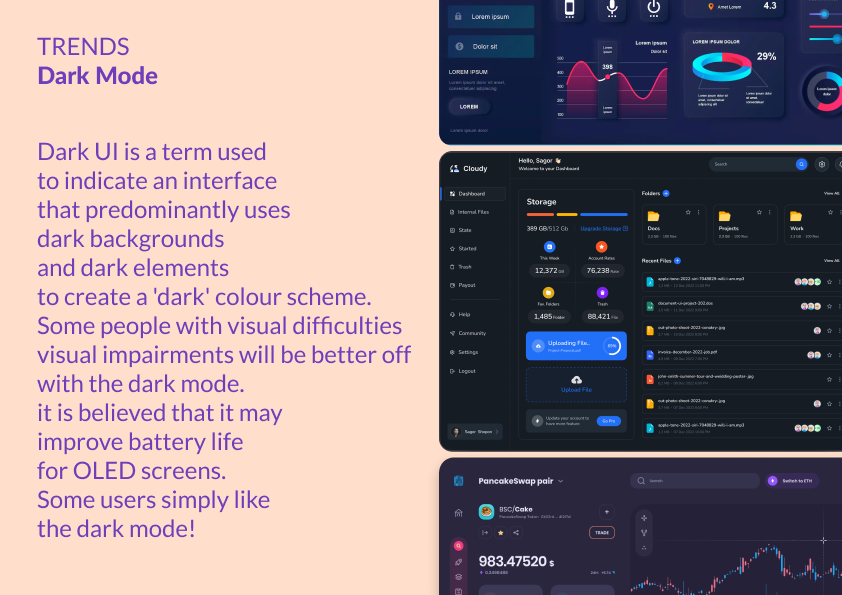
Design
We addressed the challenges reported by users by reworking the behavior of components and user flows to enhance and optimize the overall platform experience. Our primary focus was on interaction design, involving a complete restructuring of interactions within individual tools to address the identified issues. Additionally, we implemented a constant display of user action results within the tools to provide continuous feedback.
We observed that users were frustrated with the difficulty of finding their placed orders. As a result, we decided to create a highlighted area in the dashboard for easy access to this critical section. Furthermore, we expanded the workspace while minimizing the size of the navigation bar, which now expands upon mouse hover.


Visual design played a crucial role in shaping the platform’s aesthetic appeal. We developed a comprehensive library of components and styles to enhance the platform’s visual design. This centralized resource ensured consistency and efficiency. Our team carefully selected colors, typography, and graphical elements to establish a cohesive visual language that resonated with the brand and users. Through expertise, feedback, and refinement, we transformed conceptual ideas into a well-executed design that met user needs and stakeholder objectives.
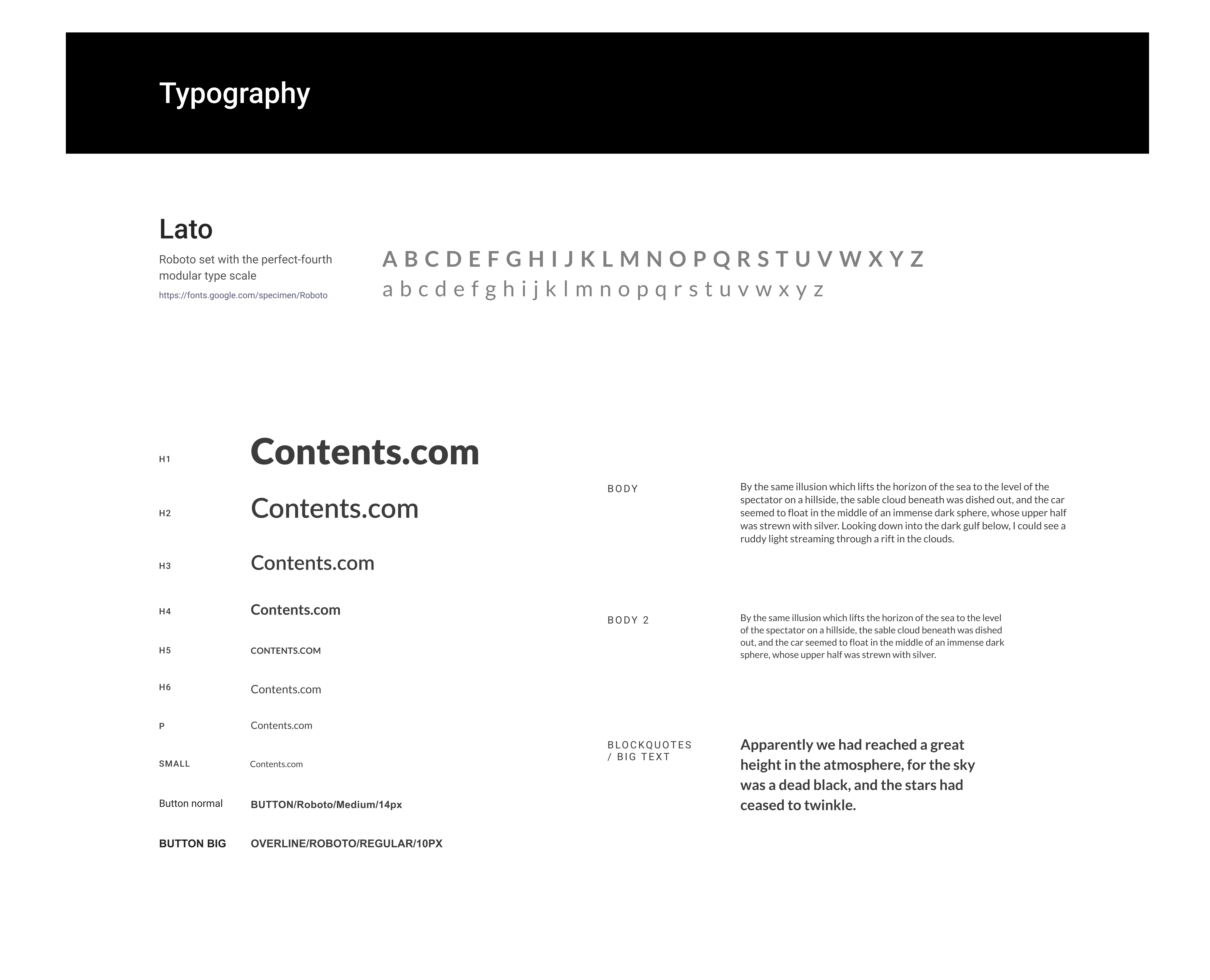
Throughout the process, we maintained close collaboration with the development teams, working hand in hand to ensure the effective implementation of the design vision. Regular feedback loops were established, allowing us to iterate and refine our designs based on the technical constraints and possibilities. Additionally, we actively sought input from stakeholders, incorporating their perspectives and insights to align the design solutions with their expectations and requirements.
The phase of design validation plays a vital role in guaranteeing the success of a product. To assess the project’s performance and gather valuable insights for iterative improvements, as a UX professional I had a range of powerful tools at my disposal including collecting user feedback online and through support calls, conducting usability tests on prototypes and the final product, as well as closely monitoring analytical data. By employing these tools, it is possible to effectively identify and address usability issues, optimize performance, and enhance the overall user experience.

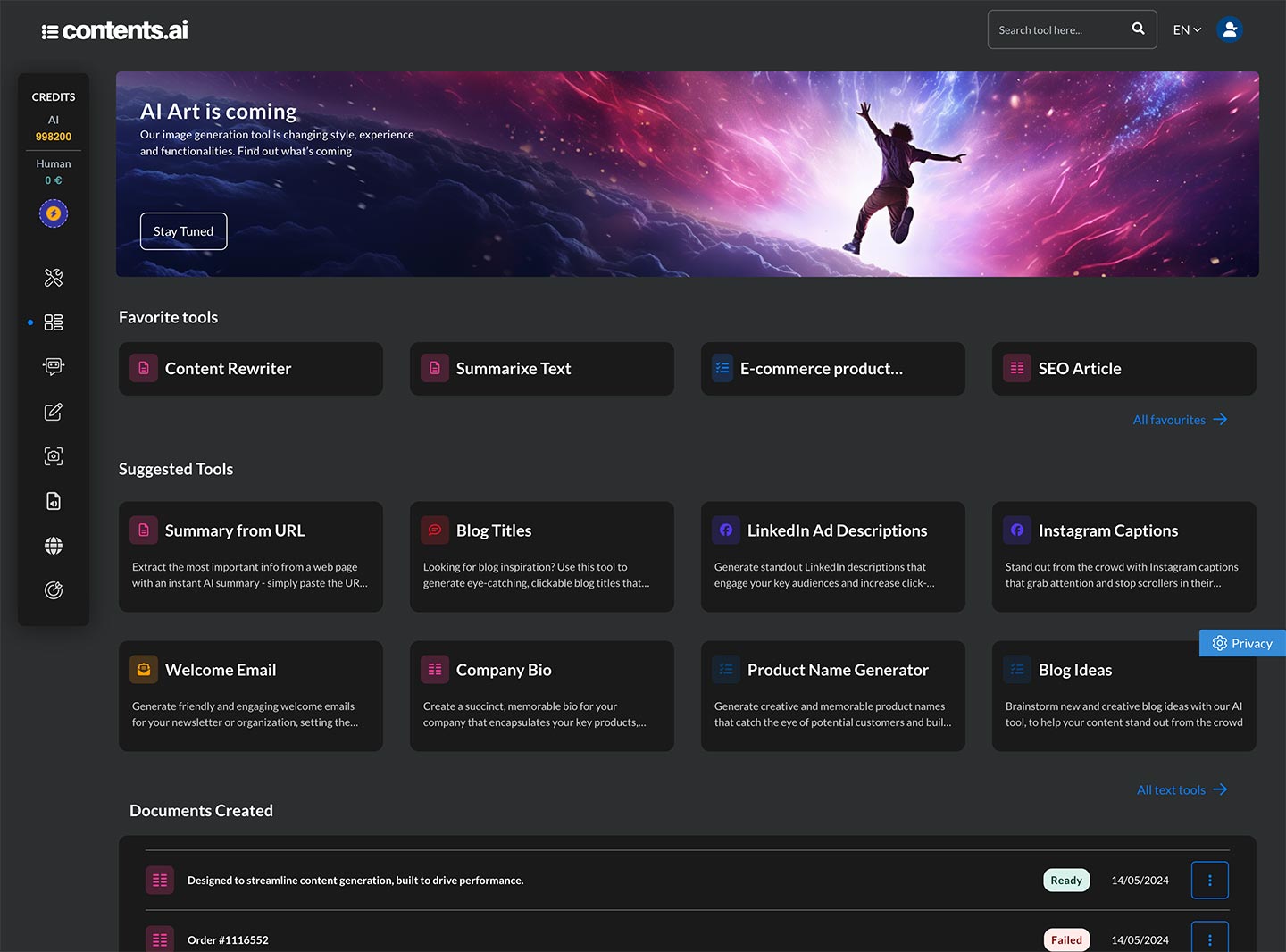

Performance Monitoring
To evaluate the success of the redesign, in addition to gathering qualitative feedback through Hotjar and monitoring user sessions, we used Mixpanel and Google Analytics 4 (GA4) to track a series of key metrics that helped us understand user behavior before and after the platform redesign.
Among the main KPIs we monitored, special attention was given to: subscription rate, renewal rate, churn rate, onboarding completion rate, task completion rate, and error and abandonment rates.. Additionally, we tracked the reduction in session duration and the increase in user return frequency, as well as the adoption rate of the new features introduced in the redesign. Finally, we observed a significant decrease in customer support requests, indicating an improvement in user understanding and platform usage.
Follow-up
Given the constant advancements in the field of generative AI, I recognized the importance of fully understanding the needs and requirements of users. Consequently, I proposed and implemented a series of exploratory research activities, comprising both qualitative and quantitative methods, to gain a clear insight into the current landscape. These activities involved four qualitative focus groups, each comprising six participants from various industries, alongside three quantitative online surveys conducted via CAWI (Computer-Assisted Web Interviewing) in three key European countries: Germany, Spain, and France. These combined approaches provided a comprehensive understanding of user preferences and behaviors, enabling the development of targeted and innovative UX solutions.
These activities led to the definition of two user personas that allowed the design process to be implemented in an informed and empathetic manner.
Through these activities, we were able to comprehensively understand several key topics:
- Understand the characteristics common to typical workflows in the client’s sectors of interest.
- Analyze the current perception of artificial intelligence in work contexts that are not yet fully integrated.
- Explore future expectations regarding AI, both in its generative and synthetic nature.
- Investigate the pros and cons of the various tools offered by Contents.com and assess possible work scenarios.
- Conduct an analysis of new users’ experience on the platform through autonomous trials, evaluating interface, ease of use, and potential improvements.
- Explore the Intention to Subscribe and assess the perception of the pricing list in light of the platform’s proposals.
- Outline marketing and product strategies for the future developments of Contents.com in terms of self-platform and enterprise tool.
- Develop an approach to engage with potential new users.
- Identify opportunities to enhance the company’s visibility and strengthen its market presence.
